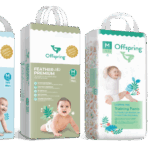Adapting a greener, more sustainable lifestyle is becoming a popular choice for many households. Not only is going green eco-friendly and helpful for the environment, it can also be a way of saving money, by cutting back on electricity and also costly items in the household. Making some small changes can lead you to discovering how exciting the challenges of going green can be for your whole family.
Table of Contents
Set an example
If you intend to teach your children to live a green lifestyle, let them see you walk the talk first! If kids see their parents showing care and consideration for the environment, animals, and people with whom they share the world, they will eventually follow suit. So, be a life-size example and watch them grow up as experts in greener, more sustainable living. Example: If your child observes you picking up rubbish from the park and placing them in the trash bin, even if it wasn’t your piece of trash in the first place, he or she will begin to understand the value of keeping public places clean, especially if you do it often enough.
Let your kids help
Children are generally eager to contribute to grown-up activities, so use this opportunity to teach them well! Have them carry a small bucket of vegetable scraps to the compost bin, or let them help sort out your recycling, though you should handle the potentially sharp edges on cans and glass. Older children can also help with the gardening, the household recycling or they may want to get involved with cleaning up their neighborhood. Make eco-friendly activities a family-time priority.
Practice a minimalist lifestyle!
You don’t have to clutter your life with material things to live happily! When it comes to anything at all, even toys for your kids, choose quality over quantity. Think before making any purchases and also, talk to family and friends about not overwhelming children with too many gifts and about checking with you first if they’re considering a big gift. Encourage kids to donate toys and clothes they no longer use to other children.
Encourage conservation
Explain to your kids the plus points of resource-conserving habits such as switching off lights when not in use and turning off water when brushing their teeth. Remember though, that if these are somewhat new concepts to them, it might take some time to get used to. You did not change overnight, and you shouldn’t expect your children to, either. Start with the things that are easiest to change and remember that every little bit helps. Add more changes gradually, and your family will soon be living greener without even realizing it.
Grow some food!
Growing your own vegetables, composting, and mulching, are all ways to contribute to a green environment in your home. Eggs shells, fruit rinds and coffee grounds are great for compost. These are simple easy tasks that will allow you to cut down on waste, save money and reuse and recycle natural resources.
Make your own natural household cleansers
Using natural cleansers is another step you can take towards a greener lifestyle. For example, you can clean glass with vinegar and newspaper, or you can use baking soda instead of scouring powder. These may seem like an alien concept to you now, but with a little research and knowledge you will not even think about stopping in the cleaning aisle at the grocery store.
















